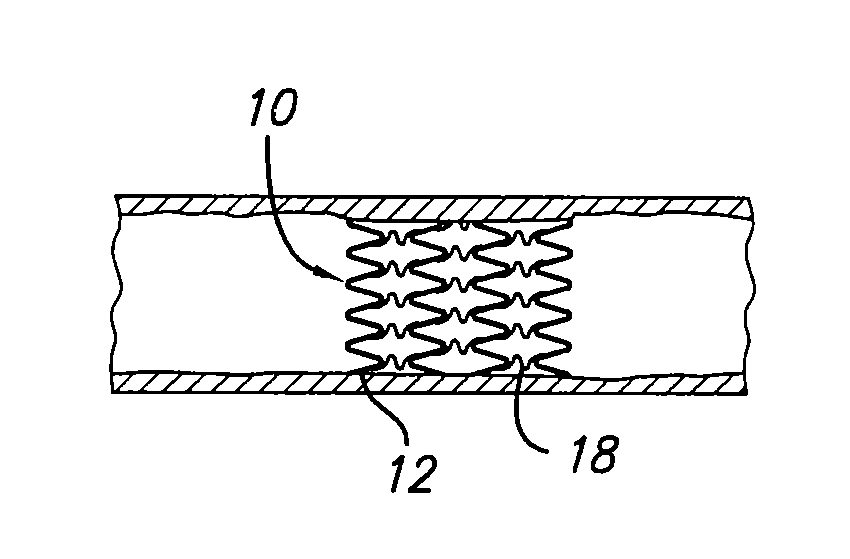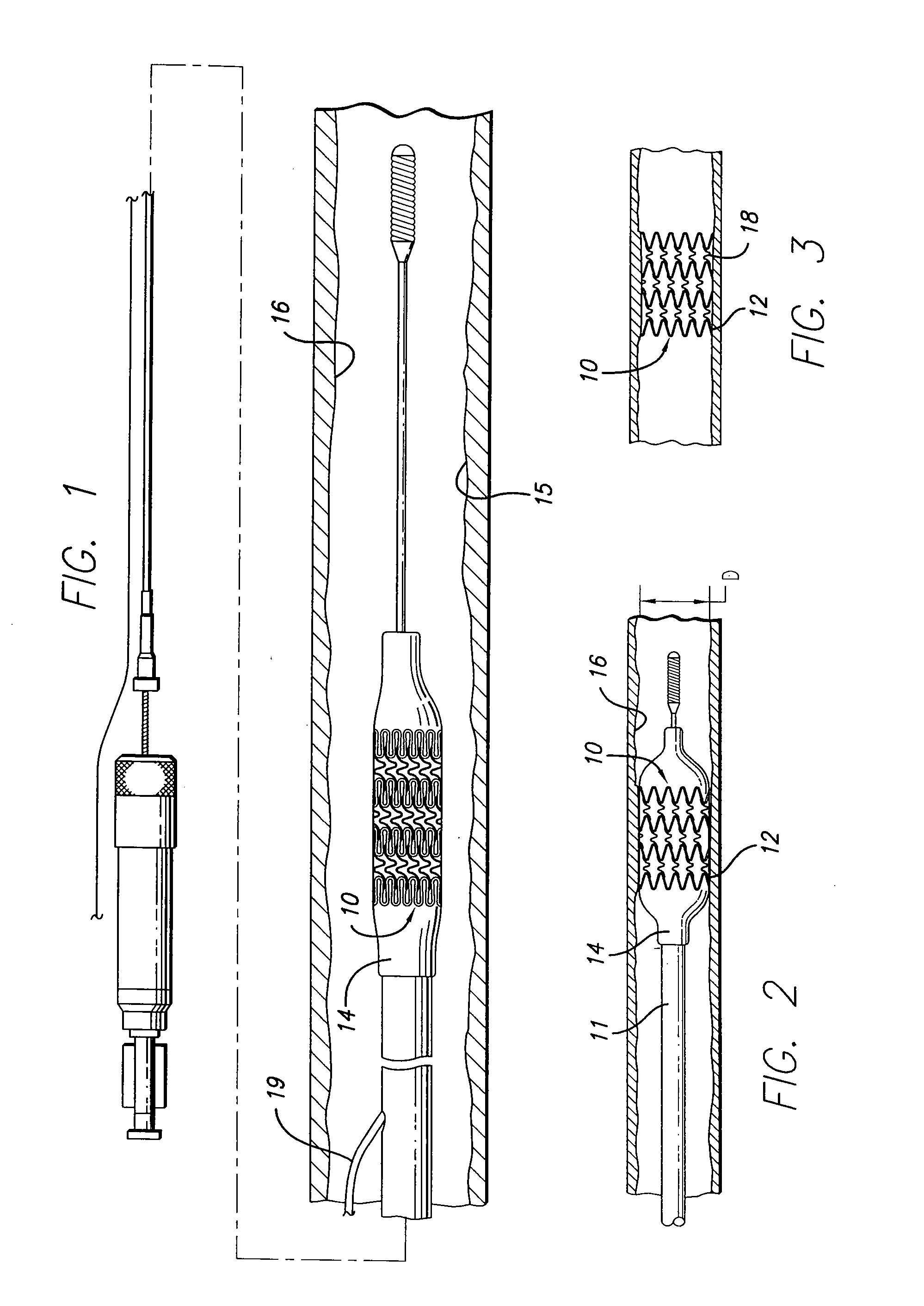Flexible stent
a flexible, endoprosthesis technology, applied in the field of expandable endoprosthesis devices, can solve the problems of limiting the expandability range, increasing the cost of manufacture, and certain prior art stents only to a limited degree, so as to maintain the patency of the body lumen, facilitate delivery, and high degree of flexibility
- Summary
- Abstract
- Description
- Claims
- Application Information
AI Technical Summary
Benefits of technology
Problems solved by technology
Method used
Image
Examples
Embodiment Construction
[0052] Before describing in detail an exemplary embodiment of a stent in accordance with the present invention, it is instructive to briefly describe a typical stent implantation procedure and the vascular conditions which are typically treated with stents. Referring now to FIG. 1, a stent 10 of the present invention is shown mounted on a catheter 11 having a lumen 19 and an inflation member (balloon) 14. The stent and catheter are shown inside the lumen of an arterial vessel 16. The stent is shown positioned across a small amount of arterial plaque 15 adhering to the lumen of the artery. In some procedures, a stent is directly implanted without a prior procedure, such as balloon angioplasties. In other procedures, the plaque is the remainder of an arterial lesion which has been previously dilated or radially compressed against the walls of the artery, or has been partially removed from the artery. Lesion dilation is typically accomplished by an angioplasty procedure, while lesion r...
PUM
 Login to View More
Login to View More Abstract
Description
Claims
Application Information
 Login to View More
Login to View More - R&D
- Intellectual Property
- Life Sciences
- Materials
- Tech Scout
- Unparalleled Data Quality
- Higher Quality Content
- 60% Fewer Hallucinations
Browse by: Latest US Patents, China's latest patents, Technical Efficacy Thesaurus, Application Domain, Technology Topic, Popular Technical Reports.
© 2025 PatSnap. All rights reserved.Legal|Privacy policy|Modern Slavery Act Transparency Statement|Sitemap|About US| Contact US: help@patsnap.com



